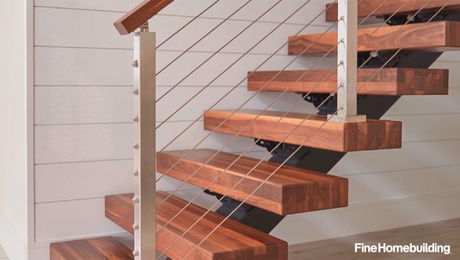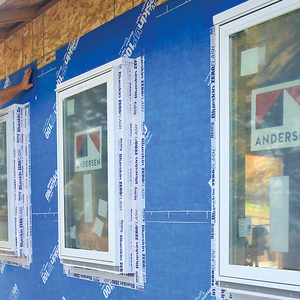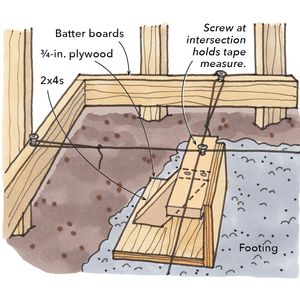Missing the Forest for the Trees…
Just an observation to share …
Beginning a ‘complete gut’ remodel; opened the outside walls of one room yesterday. House is a 1957 ranch, south of the Mason-Dixon line.
Wall framing standard 2×4’s, with solid lumber headers -appx., 4×12 (try to find that sort of lumber now)- completley filling the space between the tops of the windows and doors, and the top plate. Insulation liiks to be 1-1/2″ paper faced rock wool.
Or, it’s SUPPOSED to be. Over a total outside wall length of about 22-ft., three of the stud bays lacked any insulation at all over about a 4-ft. section. One was missing the insulation in the middle, while the others had the gap at the top of the bay. That’s 3 out of 12 bays missing insulation. Guess the guy was short a roll!
Taking that together with the space occupied by windows and headers, that’s about 10-ft. of a 22-ft wall that lacks effective insulation. Pretty shocking.
The insulation was installed with the flanges of the paper stapled to the inside of the studs- meaning that there was essentially no depth to the insulation at all, along the studs. Over time, the paper had degraded to the point where it was as brittle as fireplace ashes.
The good news is that the wood is free from mold and insect damage. Nonests or clusters of vermin were found … just one silverfish spotted.
Now … for some sommentary and speculation:
First off, how typical is this of construction? The best barn won’t keep the horses in if the doors are left open.
Next …. does anyone thing a bit of foam around the outlets and caulk around the windows will make any difference?



















Replies
More common than you might think to find the gaps and missing insulation. BTW ... it was common practice to 'inset staple' insulation ... in fact the insulation manuf. recommended it, I believe.
Sealing elect boxes and around windows - definately worthwile. Infiltration ... especially in an older home ... could be several times the heat transfer as the opaque walls.
Gut rehab? Personally, I'd consider replacing the headers w/ something more appropriate ... might be easier than you think to surgically extract them. Also ... on gable ends ... no header required. I'd also consider either HD fiberglass (R-13 minimum, maybe R-15) or foam insulation to replace. Good alternative for fiberglass would be blown cellulose ... BIB system would be good.
You have essentially one opportunity to do the insulation right ... NOW. You won't be getting back into those walls for like 40+ years, so spending a few extra hundred dollars now could save you some serious scratch over the long haul. Make sure you install the vapor retarder and seal properly.
I think our 1954 house in Louisville had 4" of fiberglass in the attic and nothing behind the brick walls. Probably took more energy to heat (with a crawl space furnace) than our current house in Minnesota.
When thinking of insulation, keep in mind that heat always moves to cold. And warm air rises to meet those cold pieces of wood.
That frame contains a lot of wood, that will provide an express route out for your expensive heat.
Merely adding insulation inside the frame will not bring your home up to standard.
Filling all the spaces with cut to size polystyrene sheet or/and foam will be a good start.
Finishing the job by lining the inside of the frame with more sheets of polystyrene, will keep your warm air away from the frame and will reduce your heating and cooling costs.
Insulating on the inside uses less insulation and means you can work day and night regardless of the weather.
Keep in mind that this is "south of the Mason-Dixon line", which is to say an area where "cold" is about 35F and snow occurs maybe once a year and stays around for about 15 minutes. In a house built prior to about 1960, insulation of any sort would be unusual down there, other than attic insulation (which is more important to keep heat from the sun out than to keep the house warm in the "winter").
And this was before central air conditioning. Someone might have had a room AC that kept one room semi-comfortable during the worst heat of the summer, but otherwise the windows were open about 9 months of the year.
As to what to do with it, if it's not brick exterior then wind no doubt blows through it like a screen door, so air sealing would be the first priority. Probably you can cut air infiltration by a factor of 5-10, and that would be far more effective than insulating.